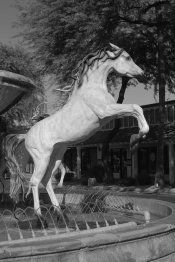blockend
Member
Is it just me, or does digital black and white look awful? I recently looked at someone's review of their Fujifilm GFX 100, including B&W shots they'd taken. The GFX is a stellar 100 megapixel medium format digital camera, colour rendition and tonality are superb, somewhere between medium and large format in film terms. The monochrome looked no better than a small sensor point and shoot.
This is born out by my own cameras. M43, APS-C, full frame, it makes no difference, without serious intervention the files look lifeless in a way colour does not. B&W digital fans routinely add artificial grain to counter this flatness, which raises the question why not just shoot film?
So what's going on? Is there something about digital imaging that kills a mono shot stone dead?
This is born out by my own cameras. M43, APS-C, full frame, it makes no difference, without serious intervention the files look lifeless in a way colour does not. B&W digital fans routinely add artificial grain to counter this flatness, which raises the question why not just shoot film?
So what's going on? Is there something about digital imaging that kills a mono shot stone dead?







